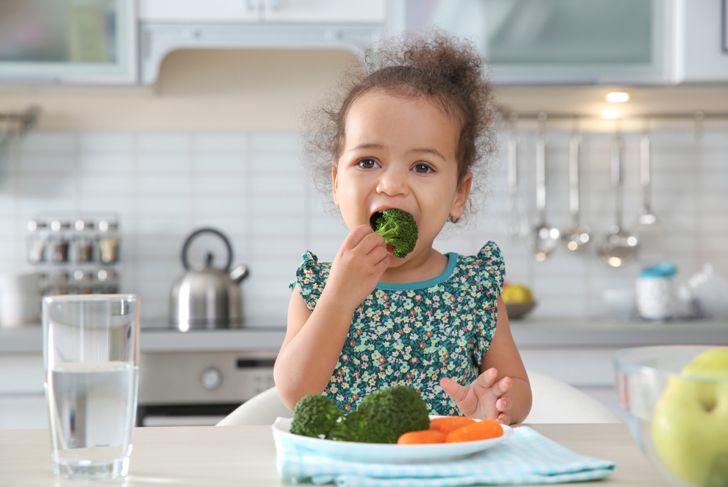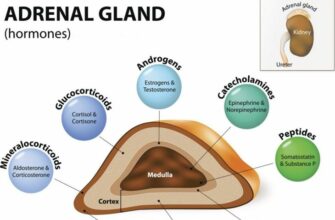For infants and toddlers to grow up healthy and strong, they need a proper diet. However, it can be difficult to tell which vitamins and minerals are missing, even when they’re getting lots of healthful foods. Understanding the signs of nutritional deficiencies can help guardians better care for their children and ensure they are eating a well-rounded diet.
Iron
An iron deficiency is one of the most common nutritional issues in toddlers and infants. Microcytic anemia is the main problem that comes from an iron deficiency at this age. It can cause visible fatigue, shortness of breath, and pale skin. While a lack of iron in the diet is usually responsible, iron deficiency may also result from celiac disease, infections, and intestinal blood loss. Most children simply need to ingest more iron, either in their diets or in supplement form, to counteract these symptoms and issues.
Vitamin D
Another extremely common problem in toddlers and infants is a lack of vitamin D. Young children with vitamin D deficiency often have no symptoms. Luckily, physicians can usually identify this nutritional issue during a regular checkup. Prolonged breastfeeding, having a breastfeeding mother who is vitamin D deficient, and low sun exposure are typically responsible. Daily vitamin D supplementation is effective, as is adding dairy and soy into the diet.
Vitamin B12 and B9
Vitamins B12 and B9, also known as cobalamin and folate, prevent anemia and other blood-related issues in newborns and infants. Cobalamin deficiency in infants usually results from vegan mothers or mothers with anemia who breastfeed their children. Many mothers do not consume a proper amount of folate while pregnant, resulting in a folate-deficient child. Infants may be born with growth and movement difficulties if they have low levels of these nutrients but can avoid long-term effects with vitamin supplements.
Calcium
Hypocalcemia may result from premature birth, infection, certain medications, and even an insufficient amount of vitamin D. Children rarely exhibit any symptoms when they lack calcium, though some toddlers may have short stature, brittle nails, and dry skin and hair. Increasing calcium through supplements and calcium-rich products like milk and green vegetables is incredibly effective. Some children may need additional vitamin D.
Zinc
One of the more serious nutritional deficiencies a child can have is a lack of zinc. The most noticeable symptom is a loss of appetite. A toddler without proper zinc levels may have a weaker immune system and become sick more easily. They may also not grow as quickly as other children their age. Inflammation can occur in some people. Zinc deficiency can appear in older breastfed infants because their diets do not contain enough nutrients. Red meat, poultry, and nuts like cashews and almonds are great sources of zinc.
Other B Vitamins
Infants and toddlers sometimes have low levels of B vitamins, specifically B1, B2, and B3. A lack of vitamin B1 can lead to beriberi, which has signs like a loud piercing cry and vomiting. Add legumes, pork, and rice to the diet to combat this. Low levels of vitamin B2 cause more general issues like sore throat and fluid retention. Foods rich in this vitamin are meats, fish, eggs, and milk. Vitamin B3 deficiency can trigger hyperpigmentation, red tongue, diarrhea, and vomiting. Yeast, milk, and cereal grains contain vitamin B3.
Vitamin K
Infants with vitamin K deficiencies usually develop them because the mother was taking a specific type of medication. However, it may also occur in infants up to six months of age who are exclusively breastfed. Bleeding is the signature sign of low vitamin K levels but is rare in children. Vitamin K is available in most foods, but the best sources are spinach, broccoli, lettuce, and oils like soybean and canola oil.
Iodine
Most foods and beverages have little iodine, making it difficult to naturally obtain the nutrient. Because of this, iodized salt is the easiest and most popular source. A lack of iodine can cause a range of health conditions, including goiter and hypothyroidism. Children with iodine deficiency are typically asymptomatic, though some toddlers may have noticeable cognitive and problem-solving issues.
Vitamin A
One of the hardest vitamin deficiencies to detect is an inadequate amount of vitamin A. This may present as a drying of the conjunctiva in the eye. The development of Bitot spots — small yellow blemishes in the whites of the eyes — is also possible. However, many children are asymptomatic. Some children rub their eyes as a sign of discomfort because of vitamin A deficiency, though there are many possible reasons for this behavior, including allergies. Foods with high levels of vitamin A include beef liver, sweet potatoes, spinach, and carrots.
Vitamin C
Vitamin C deficiencies are rare in most countries, though they do occur. A child who is not getting enough vitamin C might have bleeding gums, coiled hair, and injuries that heal slowly. This occurs because vitamin C is necessary for collagen synthesis. Citrus fruits are bursting with vitamin C, and tomatoes, green vegetables, and peppers are other healthy choices.

 Home
Home Health
Health Diet & Nutrition
Diet & Nutrition Living Well
Living Well More
More




















